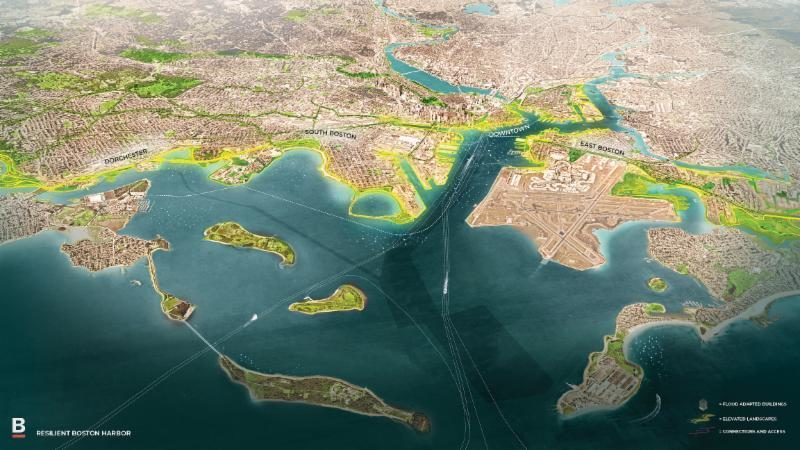Boston’s New Flood Resiliency Plan Takes a Page Out of Its Own History
Boston’s New Flood Resiliency Plan Takes a Page Out of Its Own History
Climate ready Boston. (2016, July 17). Boston.gov. https://www.boston.gov/environment-and-energy/climate-ready-boston
Boston Mayor Marty Walsh’s announcement that the city is going to devote a bevy of resources to making itself more resilient against flooding is right in line with one of the core traditions of New England: Mixing the old with the new.
It’s an ambitious plan to change the face of Boston with a wide-ranging package of different methods for protecting the areas around Boston Harbor, including elevating structures and roadways, reinforcing areas along the waterfront, and even creating new open space along the water.
Boston is one of the nation’s oldest cities, and it has a relatively small land area, so open space comes at a tremendous premium. All you have to do is look at real estate prices within the city to see how valuable any piece of property is, and until the Seaport began undergoing its massive transformation, opportunities to develop new spaces in Boston were few and far between.
That’s why the city’s plan is so impressive: It’s not just about building higher seawalls or massive bridges. Boston’s plan also involves growing the city’s footprint in order to create a buffer between the ocean and valuable land. In fact, it’s going to add 67 acres of public open space – just seven fewer acres than the combined landmass of Boston Common and the Public Garden.
This might seem like brand-new thinking, but for those who know their Boston history, it’s actually a callback to the formation of the city itself, and some of the components of the mayor’s plan are squarely in Boston’s great and historic tradition of landmaking. Boston’s founders saw that their ambitions for a City on a Hill were constrained by the tide-bound landmass they had settled. That landmass – a peninsula Native Americans called Shawmut – measured just 800 acres, and it was almost entirely surrounded by water but for a thin strip of land in the middle of the modern-day South End.
In fact, if you’ve ever wondered why the high-rent district west of the Common is called “Back Bay,” it’s because that whole section of land was just a watery extension of the Massachusetts Bay when the then-town of Boston was first settled.
Realizing that they were going to need a lot more open space to create the city they dreamed of, Boston’s forebears leveled three hills within the city, using the soil to fill in the basin surrounding Shawmut. Not only did that create more of a footprint for the city’s infrastructure, it also protected the growing burg from pollution and allowed for the creation of one of America’s earliest major ports.
Some 300 years later, Boston is once again in a position to grow, and not just because more open space creates more revenue. Severe weather has devastated several large American cities in recent years, including major hurricanes that have unleashed catastrophic damage up the Eastern Seaboard. Although New England hasn’t seen a hurricane make landfall here since Bob in 1991, even the remnants of large storms have caused damaging floods, including the late-winter Nor’easter that submerged swaths of city land in early 2018.
Mayor Walsh’s plan goes beyond bracing for the occasional storm. According to the city’s Climate Ready Maps, by the 2050s areas as far inland as Widett Circle could face flooding threats, and by 2070 an estimated sea level rise of 36 inches could put entire neighborhoods in South Boston and the Financial District under water – at high tide. A 100-year flood, which refers to the kind of flooding that has a 1% chance of happening in a given year – would turn the entire Public Garden into Boston’s newest swimming hole.
The threats against Boston and other coastal cities are serious, but Boston has found ingenious ways to build and rebuild itself since its birth. With thoughtful and environmentally appropriate reshaping of our shorelines, we can add to the legacy of literally re-shaping our city to ensure its prosperity in the future.


